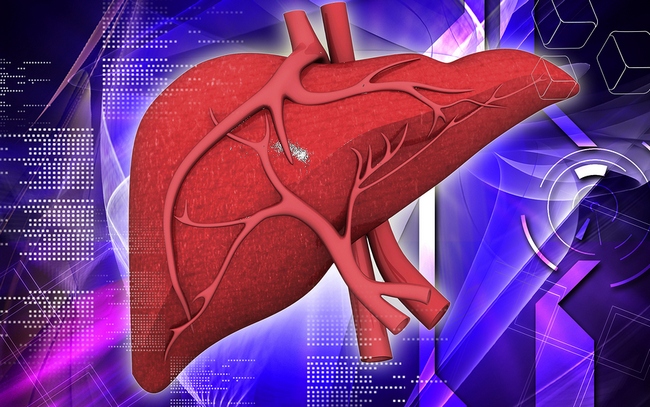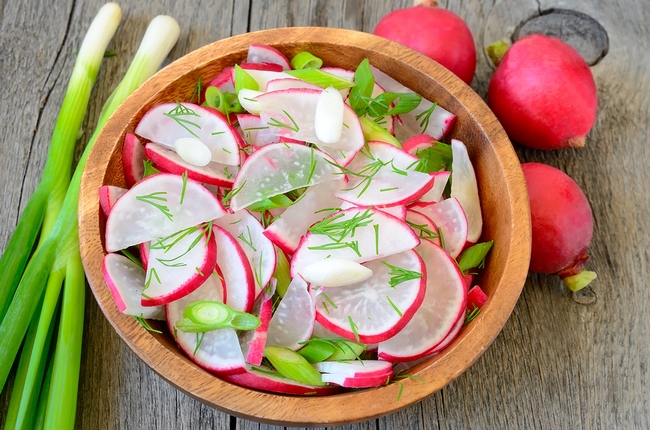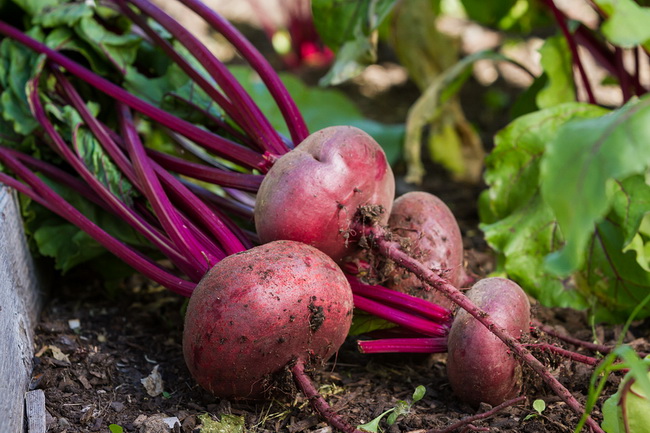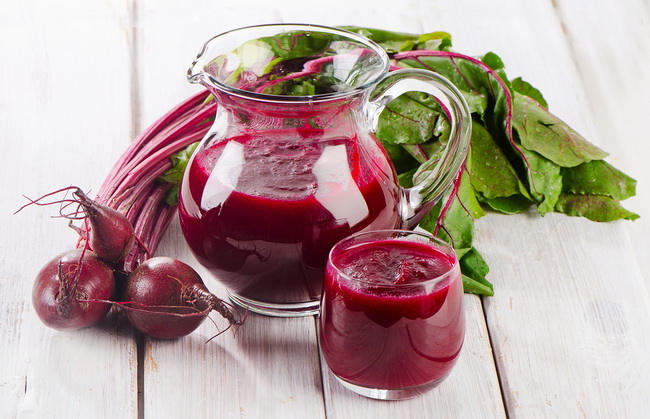- Make It Yourself Lavender Heart-Shaped Bath Bombs!
- 20 Things You Never Knew About “Down There”
- 12 Best Foods For Those Suffering From Arthritis Pain
- 12 Personal Hygiene Mistakes Almost Everyone Makes (Mom Never Told You About #4!)
- 15 Medicinal Plants And Herbs From The Cherokee People
- 12 Mind-Blowing Benefits Of Drinking Coconut Water During Pregnancy
- 12 Outstanding Winter Foods That Won’t Fatten You Up Like A Christmas Turkey
Cleanse Your Liver with These Two Common Plants

Photo credit: bigstock.com
Your liver is perhaps the busiest organ in your body. It is responsible for numerous vital functions each and every day. Your liver must break down fats, produce bile, neutralize harmful or toxic substances in the body, digest foods, produce enzymes, and regulate most of the basic biochemical processes of the body.
In today’s world it’s fairly obvious to say that the liver is overburdened and need a little help a few times per year. Keep in mind that if you are suffering from a cold or the flu, diabetes, or other types of chronic or infectious disease, or if you are pregnant or are breastfeeding, it is not recommended that you undergo a liver cleanse at this time.
Radishes and beets are a terrific way to support the detoxification of your liver. While performing this detox it’s vital that you continue to give your body sufficient nutrition and calories. This routine is in no way meant to be a substitute for a healthy, balanced diet.
Beets have a wonderfully sweet flavor and soft texture when broiled or roasted. Of course you can always eat them raw or grate them or slice them into other foods. Beets are a great source of nutrition with 2.3 grams of fiber, calcium, potassium, folate, beta-carotene, vitamin A, and vitamin C, all for a skinny 35 calories per average sized beet. Beets also contain a compound called Betaine, which is the active ingredient that can help detox and provide support for a healthy liver. Use caution when buying fresh beets as many beets are now GMO. This is why buying from local farmers markets is a good choice as you can speak to the farmer who grew the food. They will be proud to tell you that their food is organic and non-GMO. Read more about beets and its benefits for detox.
Radishes are cruciferous vegetables, along with cauliflower and broccoli, and have a crisp texture and a strong, peppery flavor. Radishes are also known to clear carcinogens and toxins from the body through a substance called isothiocyanates. This compound helps the body metabolize and remove dangerous chemicals and toxins. Raw radishes are best for this purpose, of course, and they should always be organic.
A balanced cleansing diet is a very effective way to break bad habits. However, many detox programs are nothing more than extreme fasts, which can lead to malnutrition, dehydration, and leave you feeling dizzy and fatigued. You should always consult your doctor first should you decide to undertake one of these cleansing fasts.
Continue to Page 2

Photo credit: bigstock.com
You don’t really need to undergo a fast, however, to get the cleansing benefits of beets and radishes. Simply follow this program for a healthy liver.
1. Radishes
Wash and peel about 22 pounds (10 kilos) of radishes (black radishes are best but regular radishes are good also) and put them in your juicer. This will yield about 6 pounds of juice. Store this juice in your refrigerator.
Take the fibers that are left in your juicer and mix them in the following manner. For every 2 pounds of fiber, add 17 ounces of brown sugar and 10 ounces of raw honey. Mix well and put in a warm, dark place (such as a kitchen cabinet near the stove). Shake this mixture once per day.
Begin your liver cleansing program by first taking one teaspoon of the juice in your fridge one hour after every meal. When the juice is gone, add about 3 teaspoons of the fiber/sugar/honey mixture into your food each day. Most people find it easy to put this mixture in their morning smoothie.
Continue to Page 3

Photo credit: bigstock.com
2. Beets
Take one organic beet and wash it well but do not peel it. (Remove the leaves if it has any) Cut the beet into about 3 pieces and put in a large (3 liter) glass jar. Now add three tablespoons of wheat flour and one pound of brown sugar.
Let this mixture sit in a dark place at room temperature for two days. Now add half a cup of pure water, four more cups of brown sugar and 700 grams of raisins. Let this sit for another week, shaking the jar once per day.
After 7 days, strain this mixture. You should have about 1 liter of juice. Take one teaspoon of this mixture one half hour before each meal.
When you have finished both of these juices, take a 3 month break. Then repeat this process. After two sessions, your liver should be completely cleaned and you should feel great.
Repeat this process once per year to ensure that your liver stays clean and healthy.
Continue to Page 4

Photo credit: bigstock.com
When you aren’t doing this cleanse, you can still get the benefit of beets and radishes. Take a look at the following juice recipes and give one a try.
1. Just Beet It
Ingredients:
- 1 Organic beet about 3 inches in diameter
- 2 Medium organic apples, any variety, seeds removed
- 4 Medium organic carrots
- 2 Medium organic radishes
- 1 Inch piece of fresh, organic ginger
- ½ Medium organic cucumber
- 3 Large organic celery stalks
Place all ingredients in your juicer and serve immediately. If it’s a bit too sour for your taste, add a tablespoon of raw honey.
2. The Beet Down
Ingredients:
- 1 Medium organic beet, about 3 inches in diameter
- 1 Medium organic apple, any variety, seeds removed
- 1 Organic radish
- 4 Medium organic carrots
- 2 Large organic celery stalks
- 1.5 Cups organic baby spinach
Place all items in your juicer and serve immediately.
SEE ALSO: 10 Simple yet Healthy Juice Detox Recipes for Beginners
3. The Sweet Beet
Ingredients:
- 1 Medium organic beet, about 3 inches in diameter
- ¼ Organic pineapple, peeled
- 1 Medium sized organic orange, any variety, peeled
- 2 Large organic red cabbage leaves
- 3 Medium organic carrots
- ½ Medium organic lemon fruit, peeled
- 2 Handfuls organic baby spinach
Put all ingredients in your juicer and serve immediately.
Sources:
U.S. Department of Agriculture National Nutrient Database for Standard Reference
University of Maryland Medical Center; Betaine; Steven D. Ehrlich; 2009
U.S. Department of Agriculture National Nutrient Database for Standard Reference
Linus Pauling Institute Micronutrient Information Center; Isothiocyanates; Jane Higdon; 2005
MayoClinic.com; Do Detox Diets Offer Any Health Benefits?; Katherine Zeratsky; 2010
Harvard School of Public Health: The Nutrition Source — Fiber — Start Roughing It!


































Gabe
Feb 11, 2015 at 2:18 pm
Crazy! Just eat beets and radishes.
Ariel Gail MacLean
May 5, 2015 at 6:14 pm
Or better yet, Gabe and others, monitor sites like Todd’s Seeds, which sell non-GMO / OP / Organic seeds in bulk, because once a year I can buy onsale about 5# of Radish or some suitable Cruciferous Seed which I then use for SPROUTING! Radish Sprouts are just about the most versatile, delicious, cost-effective, and concentrated medicinal vegetable we can consume…..as for versatility – you can literally consume a cup a day without even noticing due to their superior flavor and adaptability. If you look into the nutritional profile of Radish Sprouts it will knock your socks off! Then compare the price to full-grown vegetables which are often quite old and nutrition-denatured (as compared to the high enzymatic LIVE nature of a sprout). Then consider the hard-core medicinal value of any Cruciferous Sprout (Radish, Cabbage, Broccoli, Mustards), and it will become instantly evident that you simply cannot go another day without tackling this learning imperative. As an added bonus: Sprouts are the ULTIMATE Survival Food and Sprouting is your #1 Survival Skill in terms of ROI – Return on Investment. You can operate a sprouting jar anywhere including while living in a car or backpack, you can “produce” this extremely valuable medicine-food year-round with so little storage space for raw materials that your lazy mind will not be able to listen to your pathetic excuses once you Just Try It Once! Get your Sprouting System up and running for the rest of your life! I still rely on mason jar with food-grade nylon mesh screen, but there are many other options. Again, look for seeds in bulk (I ALWAYS have Mung + Radish/cruciferous mix going 24/7/365) and on sale….the rest, learning how to consume them would be the subject of an entire chapter in any Food Self-Reliance Book, and you really need to give yourself the gift of writing that chapter yourself! The sky is the limit in other words, and this will be nothing but DELICIOUS FUN!
Gabe
May 6, 2015 at 10:55 pm
You’re pretty sharp, Lady Ariel. I have purchased broccoli seeds from Todd for sprouting, but i sprout them in my home made compost in little 5” by 5” plastic containers that mushrooms come in.
I make a motion to nominate you, Secretary of Health! Wish you were my neighbor. Would like to discuss health over a glass of wheatgrass juice with you.
Continued good health, Ariel.
Ariel Gail MacLean
May 7, 2015 at 3:13 am
I am in the Pacific NW….where are you? I would like to hear how you can consume Wheatgrass Juice. Alas, I get an allergic reaction every time I try….
Gabe
May 8, 2015 at 12:06 am
Well, Madam Secretary, we couldn’t be farther apart. I live in Lauderdale by the Sea in Florida, but my favorite area in the US is your neck of the woods. There was a time that I would travel to the Portland, Oregon area, once or twice a year, to try and relocate from Michigan.
As far as your reaction to wheatgrass juice maybe you were having a healing crisis and now it may agree with you. I love the taste of it, sometimes four ounces at a time, with the glass never leaving my lips, just slowly sipping and enjoying the aroma. It was like a spiritual experience to me. Of course I grow my own.
Ariel Gail MacLean
May 8, 2015 at 5:31 am
Actually, I found this so-called “allergic reaction” I have applies to any concentrated green leaves, a pile of spinach on my plate can do it too, as well as powdered chlorella, spiralina, even powdered cilantro — all organic, mold-free storage, etc. Upon further investigation, I see it may be related to the “purines” intolerance issue in those with CKD (me). Alas, I have had this for life, so this last trail I have gone down is likely the correct one, and I will need to carefully monitor my Greens ingestion for the rest of my life, which can’t be too much longer given the many other end-of-life issues I am now confronting. What I am trying to engineer is a soft landing. I do use Greens multiple times/day, but also constantly have to back off, therefore don’t think I can entertain the addition of another source of Greens. Thanks for the input cyber-friend!
Gabe
May 8, 2015 at 12:09 pm
I’m so sorry to hear of your situation, Ariel. I’m sure you have researched extensively by reading your posts and I trust that the soft landing you’re looking for will manifest in time, but there’s no hurry. You have a lot to offer Life.
In this short video you’ll find a website called HealingKidneyDisease.com that may help. In the meantime, I’ll be sending you healing energy when you come to mind.
Hugs.
https://www.youtube.com/watch?v=c8qMZsVgtlE